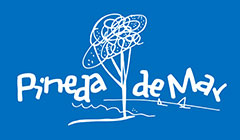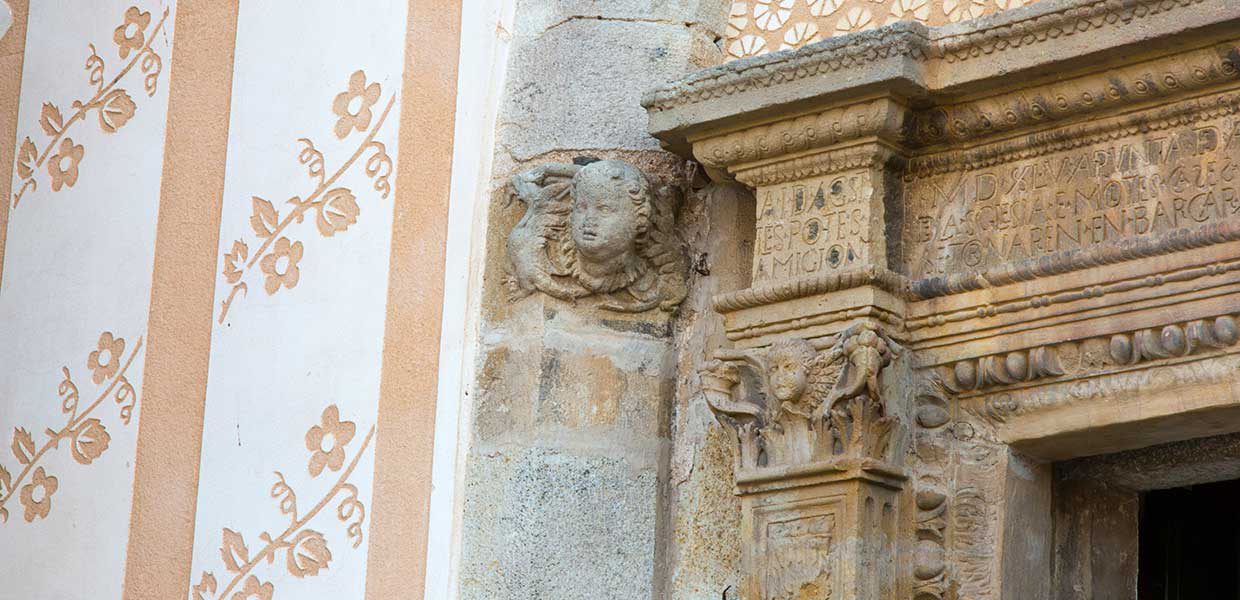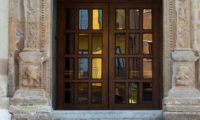Experiences
Santa Maria de Pineda Church
Rute to the center, ruta al centre
PINEDA HOLY MARY’S CHURCH
ORIGINS OF PINEDA
The church that you have in front of you is the Pineda Holy Mary’s Church, whose present image is the result of 400 years of renovations.
This church has a central nave, two aisles and an eight-sided bell tower. The façade with geometrical sgrafitto give it a very specific appearance, and it also has a stone lintel with an inscription on the entry door.
In 1079, over 900 years ago, the first temple was consecrated by Berenguer Guifré, bishop of Girona. Although there isn’t much information about the Pineda Romanesque Holy Mary’s Parish Church, it is known that it was controlled by the Lords of Montpalau. At that time, the land use was dispersed in agricultural fields and farmhouses.
One of the best-known historic episodes in Pineda was the pirate attack, carried out by Dragut, a Turkish privateer, in August 1, 1545. This church was attacked and pirates stole all valuable goods. From then on, the church and other areas in Pineda were fortified.
After this church was damaged during the Civil War, the last intervention carried out consisted of its reconstruction by the architect Isidre Puig Boada. Its eight-sided bell tower was finished and the bell was hung.
Santa Maria de Pineda Church
Pineda de Mar town centre was built around the Church of Santa Maria de Pineda, a fortified church from the first half of the 16th century that was attacked by pirates, a fact which was engraved in the memory of the people of the town. It is commemorated with the date recorded on the lintel of the entrance door of the church.
The town population was concentrated in certain streets, such as Plaça de Catalunya, Carrer Major, Carrer Ciutadans, Carrer de la Tribala and Carrer del Mar, before the great expansion in the 1960’s with the building of Poblenou.
The tour of the centre is a visit to the heart of the town, which was formed around the church of Santa Maria de Pineda, from the 16th century. On this tour we will discover how pirate raids marked the history of the town and will follow that history up to the construction of one of the first public libraries of Catalonia, in Pineda.
Pineda de Mar town centre began to be formed in the 13th century, on both sides of Camí Ral, the old Roman road that connected the north and south of Catalonia. A first group of houses located in the main streets of Carrer Major, Sant Antoni and Ciutadans was formed in a T shape, formed by the intersection of these streets with Carrer del Mar.
As of the 14th and 15th centuries, there was an increase in the population, which meant the growth of the municipality towards the sea, especially with the opening of the Carrer del Mar, which until then had restricted access.
The town continued to grow until the 20th century, which is when the neighbourhood of Poblenou was built. In the 1960’s, this new neighbourhood would house the citizens from southern Spain who came to work, and many of them worked in the field of tourism.
The route we will follow is a journey through time, the history told by the buildings, and the legacy of the inhabitants of Pineda.
The first stop on the tour is the church of Santa Maria de Pineda. The church was consecrated in 1079 by the bishop of Girona, Berenguer Guifré. The original temple was of Romanesque style and was demolished to build the current church in the first half of the 16th century.
It is a church with a central nave and two sides, and an octagonal bell tower. The façade stands out for its geometrical sgraffito, which gives it a very special appearance and the stone lintel on the entrance door. The appearance of the current church is the result of the intervention that was carried out in 1948, when the architect Isidre Puig Boada decorated the exterior façade with the sgraffito that can be seen at the moment. The last restoration of the façade dates from 1988.
According to documentation, several renovations have been commissioned to different master builders since 1514. The construction of the new sacristy was commissioned to the master builder Miguel de La Gaspi. The fortification works were commissioned to Jean de Tours in 1545. The chapel of San Juan Bautista and the great altarpiece, painted by Gabriel Bou of Girona, also date back to this period. From the interior, in addition to the altarpiece and the chapel, the vault keystones stand out, which were carved with images of the Virgin Mary and various saints.
The second major renovation took place in the 18th century, when the two side naves were built along with the bell tower, in addition to the Baroque façade, which was renovated by Puig Boada in 1948.
Finally, in the 20th century, the Chapel of the Blessed (Capella del Santissim) was built. This chapel (built by Josep Perpinyà) features three rosettes with stained glass and an image of the Pieta, carved by Frederic Marès.
This church depended on the parish of Sant Pere de Riu, in Hortsavinyà, and they are still linked in spite of being in two different municipalities (Pineda and Tordera).
The church was fortified due to the attacks of the corsair Dragut on August 1st, 1545. On that occasion, the pirates raided the town and arrived at Can Palau. The attack caused a great impact on the town, as well as personal losses and major material damage. The lintel on the front door of the church was engraved as a reminder of the attack.
The authorisation to fortify the church arrived on May 27th, 1562, and the enclosure was encircled around the church. At the same time other buildings followed the example, and houses such as Can Jalpí, Can Cànoves, or Can Castellar were fortified, building defence towers. These measures were maintained until 1691.
The pirate attacks that Pineda suffered were not only by Dragut. Documentation shows that in 1584 it suffered another, at the hands of 19 Turkish ships.
Can Jalpí
Can Jalpí was the residence of the notaries of Montpalau, which for a long time was under the ownership of the Coll family. During the attack of the Turks, the notary of the town was kidnapped and a ransom had to be paid for him, and the town was ransacked.
Nor was it the only attack suffered by the notary of Can Coll. In 1485 and during the War of the Remences, peasants entered the notary of Pineda and burned the archives. These same farmers also stormed the castle and demolished the tower as a symbolic act. Later on the Sentència Arbitral de Guadalupe put an end to such maltreatment.
The notary was given indefinitely to the Coll family, by the viscounts of Cabrera, in 1481. Jaume Coll was the first owner of the Coll family, who settled in the Can Jalpí masia. The notary was so important that delegations were established throughout the municipality of Montpalau, in particular those of the towns of Calella and Arenys.













